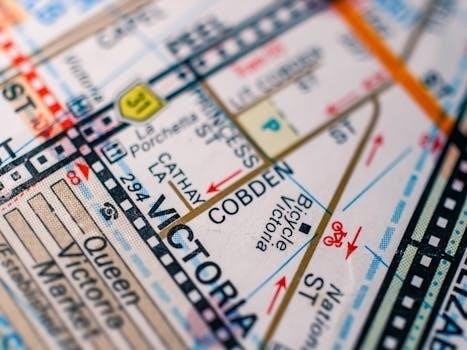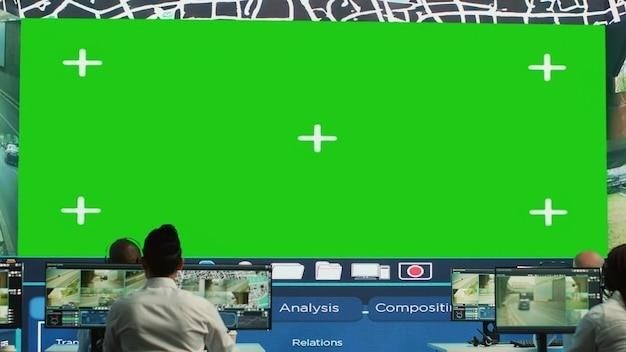Production layout is a crucial aspect of manufacturing and operations management, focusing on the optimal arrangement of resources. This strategic planning impacts workflow, efficiency, and overall productivity within a facility, ensuring smooth operations and cost-effectiveness.
What is Production Layout?
Production layout, at its core, is the strategic arrangement of machinery, equipment, workstations, storage areas, and other essential resources within a manufacturing or production environment. It’s a critical planning process that directly affects the flow of materials, information, and personnel through the facility. Effective production layout aims to minimize material handling, reduce bottlenecks, and streamline the overall manufacturing process. The goal is to create a system that promotes efficiency, safety, and productivity. It’s not just about placing equipment; it’s about optimizing the relationships between different work areas to facilitate a smooth and rapid flow of products. This careful planning considers various factors like the size and type of products, the required production volume, and the specific needs of the workforce. A well-designed layout can significantly improve operational effectiveness and reduce overall costs while supporting scalability and flexibility. It’s a dynamic process that requires continuous evaluation and adjustment.
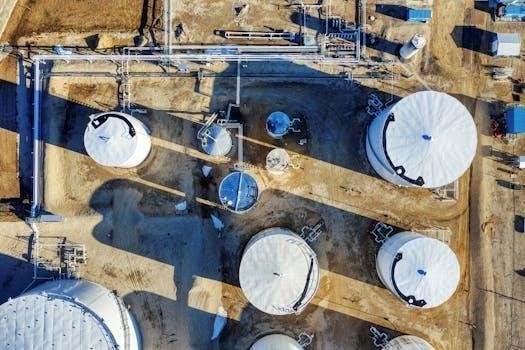
Types of Production Layouts
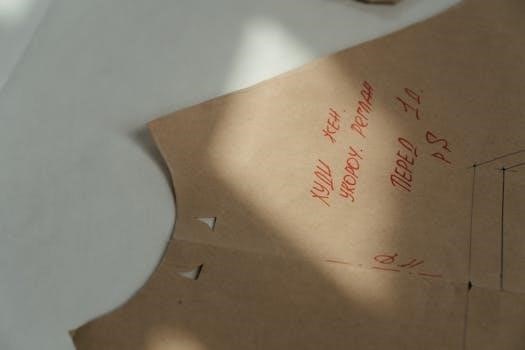
Different production environments necessitate diverse layouts. Common types include process layout, product layout, and fixed position layout. Each caters to specific manufacturing needs and operational goals for optimized efficiency;
Process Layout
Process layout, also known as a functional layout, groups similar machines and equipment together; This design is ideal for businesses producing a variety of products with different processing requirements. For example, in a machine shop, all drilling machines might be located in one area, while all grinding machines are in another. This allows for flexibility and customization, as products move between different functional areas as needed. Process layouts often involve more material handling as goods may traverse different parts of the facility multiple times. It suits low-volume, high-variety production scenarios. Effective planning is crucial to minimize backlogs and optimize the flow of materials. This approach supports dynamic production schedules and can accommodate changes in product design or volume requirements. The layout may also require skilled operators capable of working with multiple machines.
Product Layout
Product layout, also known as a line layout, arranges machinery and equipment based on the sequence of operations needed for a specific product. This layout is most effective for high-volume production of standardized items. Imagine an assembly line where each workstation is dedicated to a specific step in the manufacturing process. Products move along a fixed path, often via conveyors, with minimal variation in the production process. This streamlined approach promotes efficiency and reduces material handling. Product layouts are not easily adaptable to changes in product design, and usually require dedicated machinery. It can lead to a repetitive workflow but can achieve significant output volumes. It typically includes standardized work procedures, and requires less skilled operators. Maintenance is important to prevent line stoppages. This layout is often seen in the production of consumer goods and electronics.
Fixed Position Layout
A fixed position layout is characterized by keeping the product stationary, while resources, including equipment, materials, and personnel, are brought to it. This layout is ideal for large and bulky products that are difficult to move, such as ships, airplanes, or buildings. The project remains in a single location throughout the manufacturing or construction process. This approach requires careful planning and coordination of resources. It’s suitable for low-volume, customized products. It needs flexible and skilled workers. The material handling is complex, and the layout is not standardized, which makes production planning challenging; Scheduling and resource allocation are critical components to manage efficiently. It requires clear communication and collaboration amongst all the involved teams. It involves significant flexibility and adaptability. Due to its complexity, it needs frequent monitoring and adjustments to ensure the project is completed on time and within budget. This type of layout is often used in large scale engineering projects.

Key Considerations in Layout Planning
Effective layout planning requires careful thought about material handling, space usage, and the flexibility of the system. These factors ensure smooth workflow, efficient operations, and the ability to adapt to changing needs.
Material Handling
Material handling within a production layout is a critical element that directly impacts efficiency and cost. It encompasses the movement, storage, control, and protection of materials and products throughout the manufacturing process. An effective material handling system minimizes transportation time, reduces the risk of damage, and ensures that materials are available when and where they are needed. This involves considering the types of equipment used, such as conveyors, forklifts, and automated guided vehicles, and their integration within the layout. The layout should facilitate smooth flow of materials, minimizing bottlenecks and unnecessary movement. Proper planning also includes evaluating storage methods and locations to optimize space and accessibility. Furthermore, safety must be a prime consideration in the design of the material handling system to protect workers and prevent accidents. Ultimately, an efficient material handling system is integral to a successful production layout, contributing to overall productivity and reducing operational costs.
Space Utilization
Space utilization is a key consideration in production layout planning, as it directly impacts the overall efficiency and cost-effectiveness of operations. Effective space utilization aims to maximize the use of available floor space, minimizing waste and ensuring smooth workflow. This involves strategically locating equipment, workstations, and storage areas to optimize material flow and employee movement. Efficient space utilization also reduces the need for excessive material handling, lowering costs and cycle times. It is necessary to consider the type of production process, the size and shape of the facility, and future growth plans when planning for space utilization. Inadequate space utilization can result in congestion, delays, and decreased productivity, while optimal utilization creates a streamlined environment. Furthermore, vertical space can be utilized through shelving and storage systems. Proper planning is crucial to ensure that the layout supports efficient operations and future scalability. Efficient space utilization enhances overall operational performance and cost-effectiveness.
Flexibility and Scalability
Flexibility and scalability are vital considerations when planning a production layout, as they ensure the system can adapt to changing demands and growth. Flexibility refers to the ability of the layout to accommodate different products, processes, or volumes without major reconfiguration. This is particularly important in industries with fluctuating demand or diverse product lines. Scalability, on the other hand, is the capacity to expand the production capacity when needed without disrupting current operations. This might involve adding more equipment, workstations, or storage space within the existing layout. A flexible and scalable layout can prevent bottlenecks and maintain efficiency during periods of change or growth. These features allow for future adjustments without excessive costs or downtime, as the production system can be modified with minimal disruption. A layout designed with flexibility and scalability in mind provides a competitive advantage and allows for long-term success. Therefore, both factors must be considered carefully during the planning phase to ensure a robust and adaptable production system.
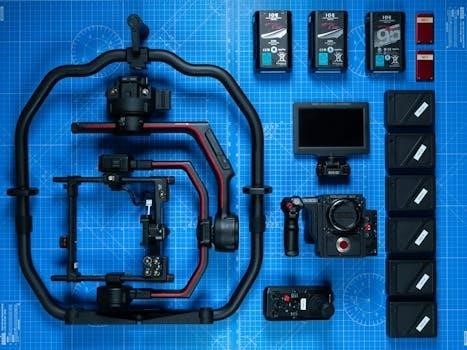
Best Practices in Production Layout
Implementing best practices in production layout is essential for achieving operational excellence. These practices involve optimizing workflow, ensuring safety, and maximizing resource utilization, all leading to increased efficiency and reduced costs.
Optimizing Workflow
Optimizing workflow within a production layout is paramount for achieving peak efficiency and minimizing operational bottlenecks. A well-optimized workflow ensures a seamless flow of materials and products through the production process, reducing lead times and enhancing overall productivity. This involves carefully analyzing the sequence of operations and strategically positioning workstations to minimize unnecessary movement and handling. Effective workflow optimization also includes the implementation of clear pathways for material transport, ensuring a smooth and uninterrupted process. Furthermore, proper planning helps to reduce the risk of errors and rework, leading to improved quality and customer satisfaction. By focusing on streamlining the flow of materials, information, and people, companies can significantly improve their operational performance and competitive edge. Continuous evaluation and adjustments are necessary to maintain the efficiency of the production process and adapt to changing demands. This commitment to workflow optimization is a critical factor in achieving long-term success in any manufacturing environment. The integration of technological solutions can also play a key role in optimizing workflow, leading to a more efficient and productive process.
